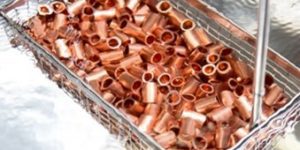Former Racer Builds a Shop that Goes Faster
Todd Cuffaro is a former driver of race cars and now, as president of Miller Machine Works, he is driving his company to finish first in a number of areas, mainly performance on complex parts, quality, turnaround time, and sales.
Posted: March 13, 2012
After kicking the tires on a number of popular CAM systems, Miller CNC purchased the Hermle machining center and a seat of hyperMILL from OPEN MIND (Wessling, Germany) at the same time. “We were counting on the personal service we were promised after the sale,” notes Cuffaro. “We were taking some really big steps in a really short amount of time, and I wanted to avoid any disruptions that would result in moving backward as opposed to the huge leap forward we wanted.”
Training on hyperMILL involved a week of one-on-one at Miller CNC, after which the company was confident in making parts on its own. “hyperMILL turned out to have everything we knew we needed plus several features we didn’t appreciate prior to implementation, like stock regeneration and feature recognition,” Cuffaro says. “We’re able to import a 3D model, design a fixture, create efficient toolpaths, simulate the machining process, and post the code to the machine, all in the same program. Any rev change, we just regenerate the solid model and the toolpaths adjust themselves.”
Feature recognition played a role in helping Miller CNC tackle an amplifier box aerospace part with 600-plus holes. Where the shop had to pick every hole and program for center drilling, drilling, tapping, hole depth, and inclination, machining specialists at OPEN MIND were able to show Miller’s programmers how to build a macro that would communicate the entire job to the machine tool in a fraction of the time.
With feature recognition, existing CAD geometry information is used for CAM programming, and typical and repeating geometries are defined as features. Along with the assigned geometries, features contain all information relevant to production, such as top, bottom, and start point. These are defined once and can then be assigned to the machining strategy.
“From a single programmed coordinate system, the software automatically defines the hole type, depth, and inclination using feature recognition and applies machining parameters with macros based upon the customer‘s shop standards,“ says OPEN MIND account manager Kevin Lewis. The movement between positions, including jumping over bosses, is 5-axis movement collision-checked against the model. “Collision-checked removal of safe position movements save time,” adds Lewis. “The result is production machining without the hassle.“
More importantly, programming the job and communicating all the information to the machine tool is now a matter of 20 seconds versus the three hours it previously took. Cuffaro also credits hyperMILL programming with landing and keeping a complex medical part – a prosthetic weightlifting device from San Diego-based Maxgrip Systems from a design by local mechanical design firm Luxon Engineering (San Deigo, CA). “It’s an assembly that clamps around a barbell or dumbell so an amputee can safely lift weights and stay in shape,“ he says. “The parts are fairly complicated and require tight tolerances to make sure the assembly mates together perfectly. The first run was on our three-axis vertical using another CAM system. We completed the part in five operations and needed a custom tool and some fixturing. It definitely took too long.”














